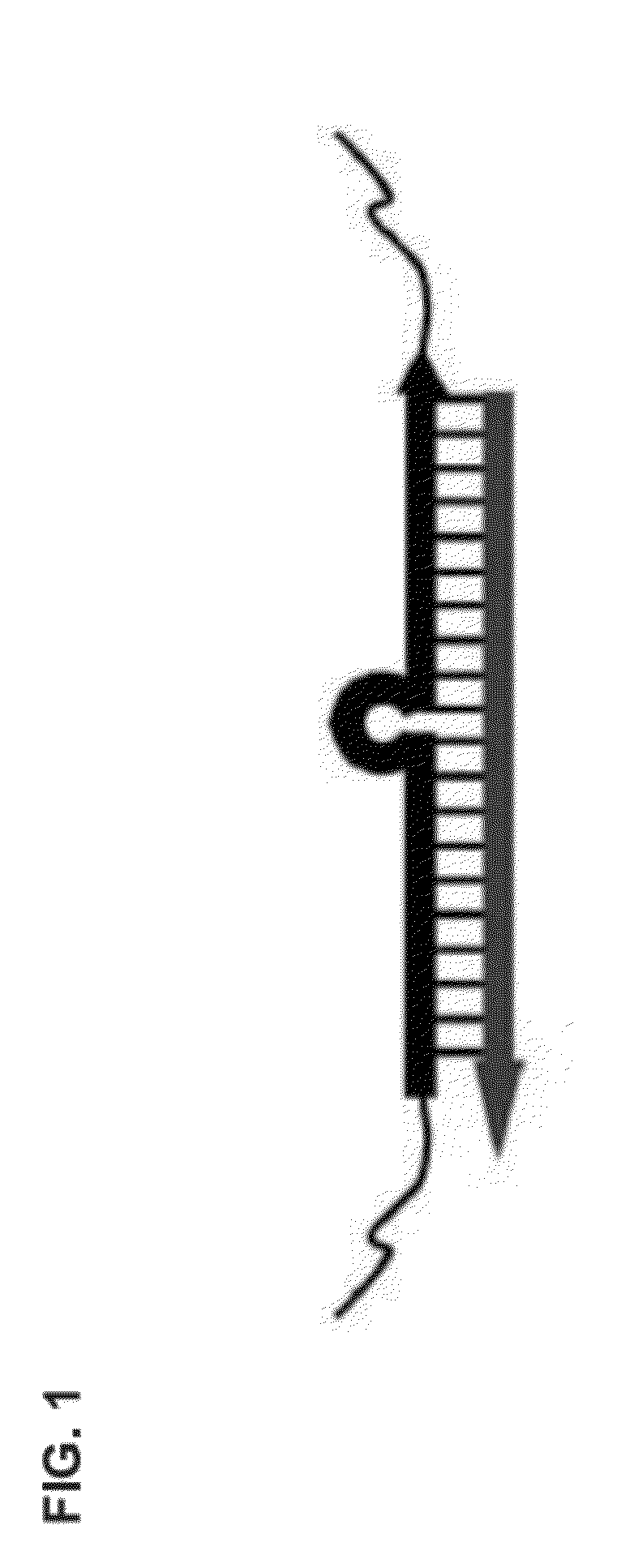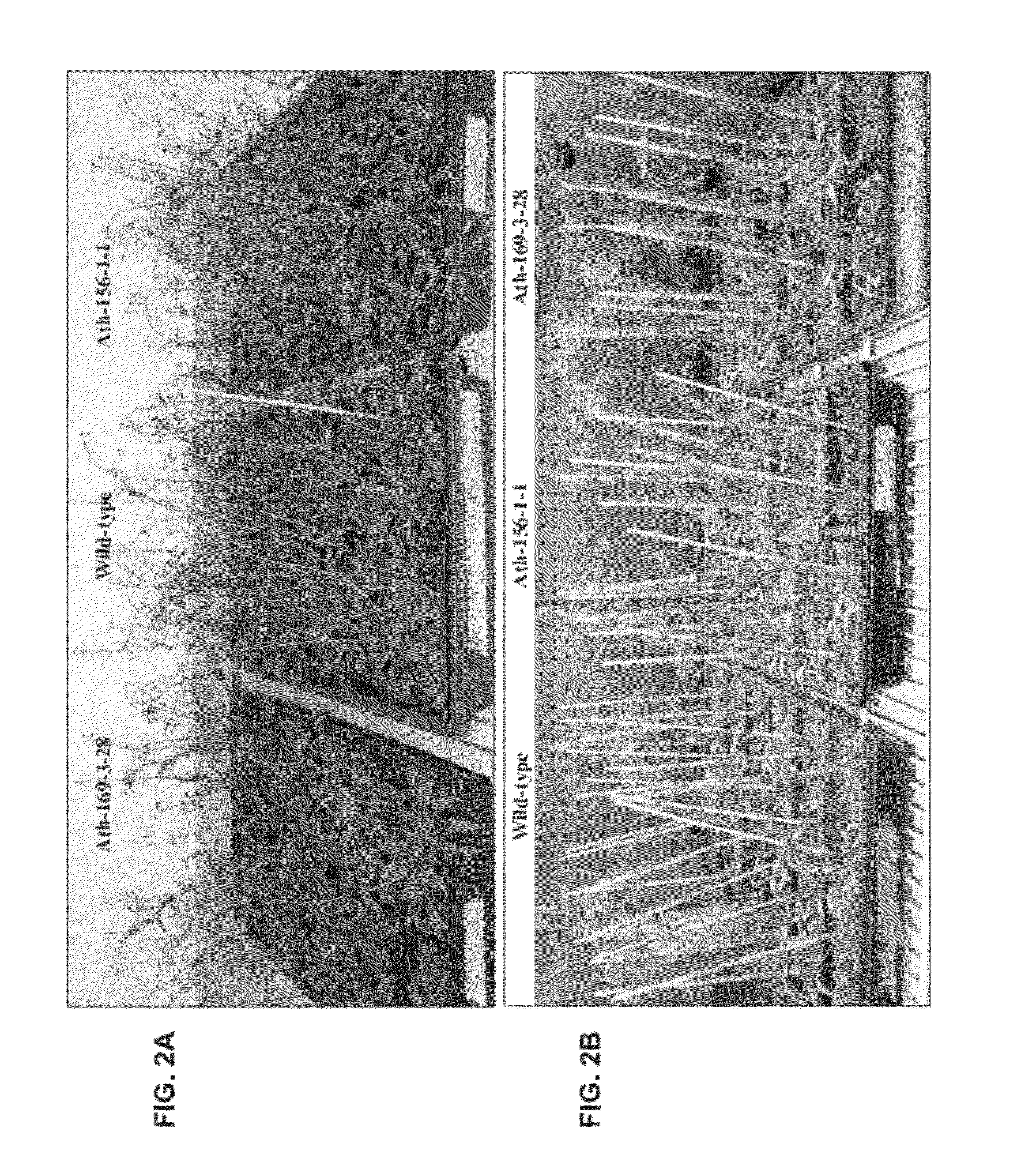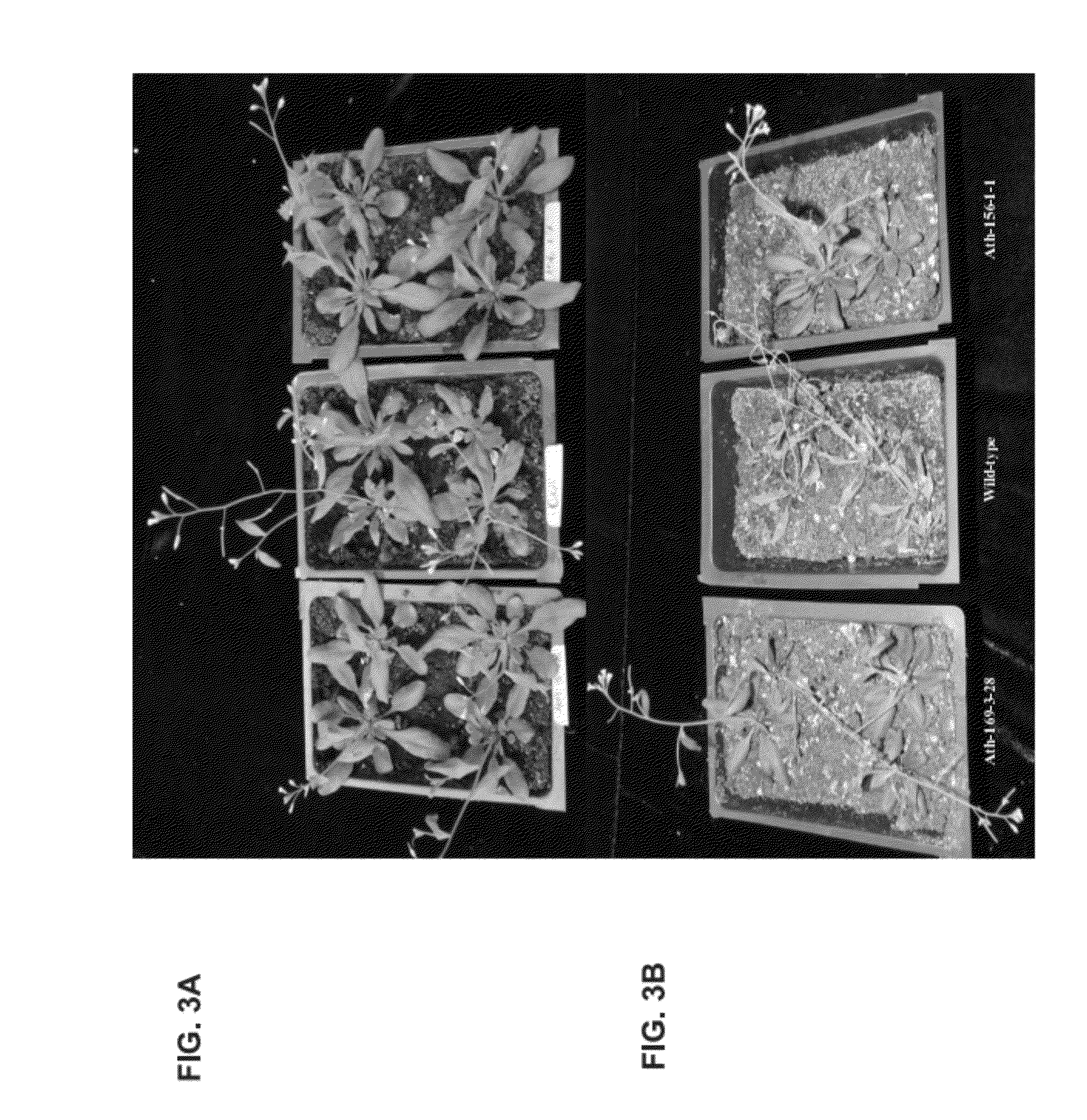Compositions and methods for enhancing plants resistance to abiotic stress
a technology of abiotic stress and composition, applied in the field of micrornas, can solve the problems of affecting the loss of billions of dollars in annual yield worldwide, and the inability to predict the size of mirnas other than the perfectly complementary intended targets, so as to increase the tolerance of plants, increase the vigor or yield of plants, and increase the biomass
- Summary
- Abstract
- Description
- Claims
- Application Information
AI Technical Summary
Benefits of technology
Problems solved by technology
Method used
Image
Examples
example 1
Differential Expression of miRNAs in Corn Plants after One Week of Drought or High Salinity Conditions
[0288]Corn plants were first allowed to grow at standard, optimal conditions for two weeks. Plants were subsequently divided into three groups: control, salinity- and drought-treated. The control group was irrigated to saturation, twice weekly with tap water. The salinity group was irrigated twice weekly with tap water spiked with 150 mM NaCl. The drought group was not irrigated. The experiment continued for one week, after which plants were harvested. Two to three plants from each treatment were grouped as a biological repeat. Five to six repeats were obtained for each treatment, and RNA was extracted from leaf tissue.
[0289]The expression level of the corn microRNAs was analyzed by high throughput microarray to identify microRNAs that were differentially expressed in response to drought or salinity. Several members of the miR-169 family were found to be down-regulated in response t...
example 2
Differential Expression of miRNAs in Corn Plants after Two Weeks of Drought or High Saline Conditions
[0290]Corn plants were first allowed to grow at standard, optimal conditions for two to weeks. Plants were subsequently divided into three groups: control, salinity- and drought-treated. The control group was watered to saturation twice weekly with tap water. The salinity group was irrigated twice weekly with tap water spiked with 150 mM NaCl. The drought group was not irrigated. The experiment continued for two weeks, after which plants were harvested. Two to three plants from each treatment were grouped as a biological repeat. Five to six repeats were obtained for each treatment, and RNA was extracted from leaf tissue.
[0291]The expression level of the corn microRNAs was analyzed by high throughput microarray to identify microRNAs that are differentially expressed in response to drought or salinity. Several members of the miR-156 family were found to be up-regulated in response to b...
example 3
Differential Expression of miRNAs in Sorghum Plants after Two Weeks of Drought or High Saline Conditions
[0292]Sorghum bicolor plants were first allowed to grow at standard, optimal conditions for two weeks. Plants were subsequently divided into three groups: control, salinity- and drought-treated. The control group was watered to saturation twice a week with tap water. The salinity group was irrigated twice weekly with tap water spiked with 150 mM NaCl. The drought group was not irrigated. The experiment continued for two weeks, after which plants were harvested. Two to three plants from each treatment were grouped as a biological repeat. Five to six repeats were obtained for each treatment, and RNA was extracted from leaf tissue.
[0293]The expression level of the sorghum microRNAs was analyzed by high throughput microarray to identify microRNAs that were differentially expressed in response to drought or salinity. Several members of the miR-529, miR-164 and miR-159 families were fou...
PUM
| Property | Measurement | Unit |
|---|---|---|
| Fraction | aaaaa | aaaaa |
| Volume | aaaaa | aaaaa |
| Volume | aaaaa | aaaaa |
Abstract
Description
Claims
Application Information
 Login to View More
Login to View More - R&D
- Intellectual Property
- Life Sciences
- Materials
- Tech Scout
- Unparalleled Data Quality
- Higher Quality Content
- 60% Fewer Hallucinations
Browse by: Latest US Patents, China's latest patents, Technical Efficacy Thesaurus, Application Domain, Technology Topic, Popular Technical Reports.
© 2025 PatSnap. All rights reserved.Legal|Privacy policy|Modern Slavery Act Transparency Statement|Sitemap|About US| Contact US: help@patsnap.com



